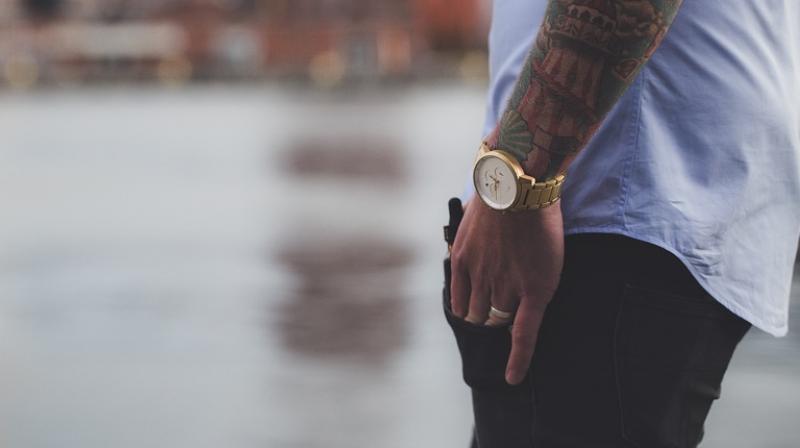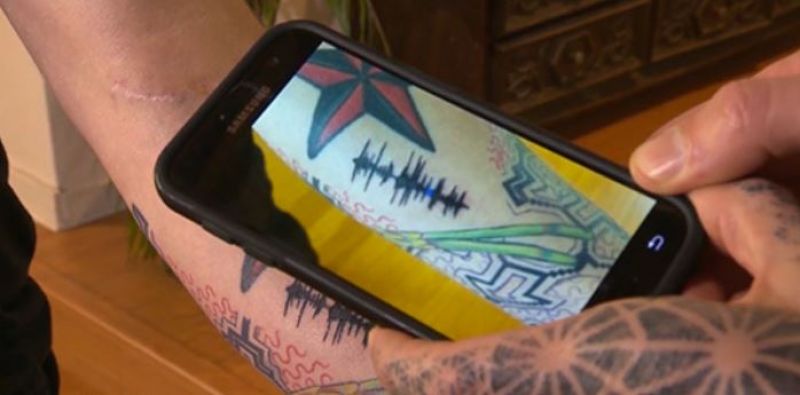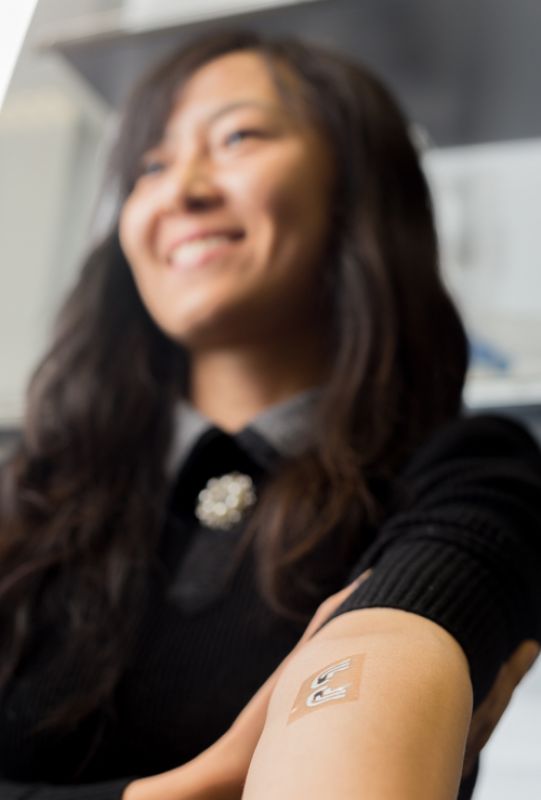The freaky future: Technology-infused tattoos

The tattoo culture has been prevailing since the last 5,000 years. Yes, that’s a fact. The word “tattoo” is believed to be derived from both the Polynesian “Ta” — meaning “to strike” and the Tahitian “tatau” meaning “to mark.” Scientific evidence proves that tattoos have been a part of the human culture since time immemorial. German hikers back in 1991 discovered mummified remains of a prehistoric human named ‘Otzi’ on the Oztal Alps (near the border between Italy and Austria). Interestingly, the most unique feature prevalent on fellow ‘Otzi’ was the 57 tattoos that his body adorned. Such findings ever since, have proven that tattoos have been a part of the human society since their inception itself.
 Ötzi also called the Iceman, the Similaun Man, the Man from Hauslabjoch, is a nickname given to the well-preserved natural mummy of a man who lived around 3,300 BCE (Image: Wikipedia)
Ötzi also called the Iceman, the Similaun Man, the Man from Hauslabjoch, is a nickname given to the well-preserved natural mummy of a man who lived around 3,300 BCE (Image: Wikipedia)
Fortunately, we’ve entered such an age wherein a visible tattoo no longer casts you into negative light anymore. It’s now looked upon as a form of highly unique and personal art form. A greater spectrum of people has finally embraced the tattoo culture for what it truly is — an artistic statement. In fact, a Pew study recently discovered that nearly 40 per cent of Americans under forty-years-of-age have inked themselves. Well, the Americans truly do love tattoos.
As we phase through the 21st century, the tattoo culture — like most things these days — is being infused with technology. So, what exactly is the future of tattoo? Let’s find out.
Soundwave Tattoos: Ever wanted to memorialise a loved one forever? Soundwave Tattoos is a new way to express oneself using art and technology. This tattoo literally plays back.
California-based Nate Siggard brought together a team of experts that worked on personalised augmented reality tattoos. Users simply need to record or upload their desired audio clip on the app called Skin Motion and then purchase the Soundwave Tattoo, which will be inked by a Skin Motion certified artist.
 Technology incoporates audio into body ink (Image: Soundwave)
Technology incoporates audio into body ink (Image: Soundwave)
This platform is scheduled to launch next month. Like any tattoo, there will be normal aging of the Soundwave tattoo over time. The company has implemented a one minute limit to the audio. However, the best Soundwaves are between 5 to 20 seconds of someone talking.
DuoSkin: A joint initiative made by Microsoft Research and MIT — DuoSkin is a fabrication process that enables anyone to create customised functional devices that can be attached directly onto their skins.
 DuoSkin metal leaf traces serve both, decorative and functional purposes, this LED necklace is an example of jewelry-like routing made with DuoSkin.
DuoSkin metal leaf traces serve both, decorative and functional purposes, this LED necklace is an example of jewelry-like routing made with DuoSkin.
The artists make use of a gold metal leaf (cheap, skin-friendly and robust) to demonstrate three types of on-skin interfaces including, sensing touch input, displaying output and wireless communication.
The tattoo is developed in a way that allows users to control their smartphones, display information and even store information on their skin. As described the company, “On-skin electronics will no longer be black-boxed or mystified, instead they will coverage towards the user friendliness, extensibility, and aesthetics of body decorations.”
Needle-free way to monitor glucose levels: Nano-engineers at the University of California, San Diego have tested a temporary tattoo that both, extracts and measures the level of glucose in the fluid in between skin cells. This is the first-ever example of the flexible, easy-to-wear device that promises a step forward in non-invasive glucose testing for patients with diabetes.
 Nanoengineers at the University of California, San Diego have tested a temporary tattoo that both extracts and measures the level of glucose in the fluid in between skin cells.
Nanoengineers at the University of California, San Diego have tested a temporary tattoo that both extracts and measures the level of glucose in the fluid in between skin cells.
According to the students at the university, this “proof-of-concept” tattoo could pave the way for the Centre to explore other uses of the device, such as detecting other important metabolites in the body or delivering medicines through the skin.
Emphemeral tattoos: The biggest psychological challenge someone faces while getting inked is the tattoo’s permanent nature. Until recently, the two options one could opt for if they wanted a tattoo temporarily was either to go ahead with superficial temporary tattoos or end up undergoing painful laser removal.
 “Tattoo inks today are permanent because of the fact that the dye molecules are too big for your body’s immune system to take away,” explains co-founder Anthony Lam.
“Tattoo inks today are permanent because of the fact that the dye molecules are too big for your body’s immune system to take away,” explains co-founder Anthony Lam.
Emphemeral tattoos, scheduled to launch sometime in 2018 offers individuals with the option of ridding themselves of tattoos when they feel like. The time frame usually lasts anywhere between three to twelve months. In other words, if you are ready to get rid of the tattoo, you simply need to use a special removal solution on the original and you’re done.
3D Printed tattoos: A France-based company, Appropriate Audiences has created a 3D printer that can successfully tattoo a human arm.
 (Image: Appropriate Audiences)
(Image: Appropriate Audiences)
This could potentially remove the need to hire expensive tattoo artists. Instead, a robot could simply replicate any design that you can create on any device at the comfort of your home.

